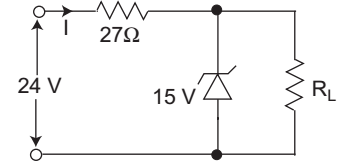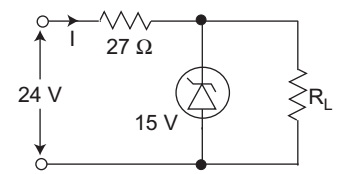Physical electronics devices and ics miscellaneous
- In a PN-junction diode, holes diffuse from the P region to the N region because—
-
View Hint View Answer Discuss in Forum
NA
Correct Option: C
NA
- In an unbiased PN-junction, the junction current at equilibrium is—
-
View Hint View Answer Discuss in Forum
In an unbiased PN-junction the junction current at equilibrium is zero, because equal but opposite carriers crossing the junction.
Correct Option: C
In an unbiased PN-junction the junction current at equilibrium is zero, because equal but opposite carriers crossing the junction.
- The potential barrier at a PN-junction is due to the charges on either side of the junction. These charges are—
-
View Hint View Answer Discuss in Forum
The potential barrier at a PN-junction is due to the charges of fixed donor and acceptor ions.
Correct Option: D
The potential barrier at a PN-junction is due to the charges of fixed donor and acceptor ions.
- The output waveform will be—

-
View Hint View Answer Discuss in Forum
During the forward biased
Vo = 
Vi 600 
– Vr 600 + 100
Where, Vr = .6 V= 10 × 600 - 0.6 700
= 8.57 – 0.6 ≈ 8.00 V
Correct Option: D
During the forward biased
Vo = 
Vi 600 
– Vr 600 + 100
Where, Vr = .6 V= 10 × 600 - 0.6 700
= 8.57 – 0.6 ≈ 8.00 V
- The circuit in figure shows a zener-regulated d.c. power supply. The zener diode voltage is 15 V. The minimum value of RL down to which the output voltage remains constant is—

-
View Hint View Answer Discuss in Forum
From given figure
VZ = 15 VI = 24 – VZ = 24 – 15 27 27 I = 1 3 RL min = VZ = 15 = 45 Ω IL (max) 1 / 3 
Correct Option: B
From given figure
VZ = 15 VI = 24 – VZ = 24 – 15 27 27 I = 1 3 RL min = VZ = 15 = 45 Ω IL (max) 1 / 3 

